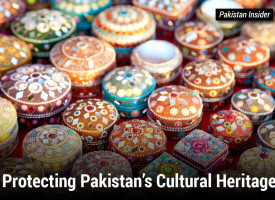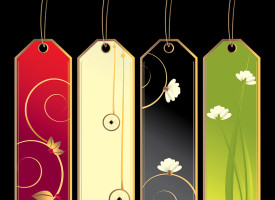The craze has begun people!
No, not the “azaadi” craze or the “inqalaab” craze. Those are just passing fads.
This is a craze to surpass all crazes! It’s the Pakistani Wedding Craze!!
Every Pappu, Raju and Munni knows that the wedding season in Pakistan begins by the mid of October and continues till mid-March.
In these 5 months you won’t find a hall or lawn empty i.e. unless you have booked it in advance!
This is the season of Pakistani “SCHWING”. That’s the equivalent of the western bling! It’s the season for ghagras, lehngas and – let’s not forget – the shararas.
Let’s take a closer look at some major aspects of the wedding season in Pakistan
Shopping!
If your wedding is in December, the shopping begins in June. If it’s in October the shopping starts in April. And this is not the “take your time” type shopping timeline. These six months are jam packed with shopping sprees. So much so that the male members of the household virtually cease to exist – unless you’re needed for driving the females around for their shopping sprees of course!
The Dress
Oh, who can overlook the dress! Whether they’re the ones getting married or not, every woman, young or old, wants to be the center of attention!
The wedding magazines come out and every single site is browsed for the perfect dress. This design is matched with that one, and that color is matched with this one, with the hope that the final combination will result in the dress to end all dresses!
The Events
There’s the pre-dholki dholki, to which only the family is invited; this is the indication that the dholki craze has begun. This is followed by the friends-only dholki, several spur of the moment dholkis, and finally the grand dholki!
In between the dholkis, there are the dance routine practice sessions: the pre-dholki session where the routine is practiced for the grand dholki; and then there are the post-dholki sessions where more routines are practiced for the Mehndi.
Then begin the mayun and the mehndi. There is the girl’s mayun and the boy’s mayun (that’s when they put ubtan on the guy), followed by the girl’s-side mehndi and the boys side mehndi.
Finally, after what seems to take forever, we finally arrive at the baraat and valima. Presently these are standalone events, but the way things are going we might soon have a friends-only-valima and friends-only-baraat also!
The Menu
23 different types of dishes are a must! Amongst which biryani and korma are both sacred, no-can-do-withouts! Then there are the fad-dishes; dishes which suddenly gain in popularity and just as suddenly seem to disappear. Just my observation, the weirder a food’s name, the more likely it is to surge in popularity! Examples of this phenomenon include: Kunna (huh?) or balti gosht (yes, that translates as ‘meat in a bucket’).
Then there are the 50-odd types of roti and weird jelly like sweet dishes (yummy!). Generally, just my observation, the caterers tend to screw up everything except the biryani and the korma.
The Stage
‘Baba mujhay aisa stage chahiyay jis mai Moon ki reflection aisi aay ke photo mein lagay k men Moon per khara/khari hoon’.
Seems like an extreme request, but it’s not that far off the mark!
Finally… a small reminder
Any Pakistani knows that there are many other crazy things that the wedding season brings with it: the darzi fiasco, the facial appointment for guys, the perfect photographer, and lots more. However, I would like to end this post on a serious note.
As Muslims we should understand that other than the valima and the nikkah (minus the whole baraat just the qubool hai part), there are no other events in our wedding culture that have any roots in Islam; the religion which the majority of us Pakistanis ascribe to.
Most of what we do in our weddings is derived from foreign traditions and the rest is just plain extravagance and wanton display.
A wedding is one of the most important events in a Muslim’s life. Your spouse is meant to complete your religion for you, yet here we are, shrouding this very holy event in everything un-Islamic that we can find.
Could this be the reason for so many unhappy and failed marriages in our society today?








U r rite bro. May Allah S.W.T. bless us with real Islam..
I agree with you but i like only stage like moon this is new for me remaining things are not very wel.
Extravagance in dowry payments and wedding celebrations are all in conflict with the Islamic Law, because the most blessed marriage is the least expensive one; and the more the expenses are decreased, the more the blessing are increased.